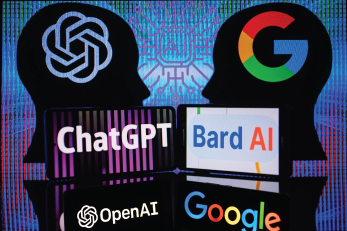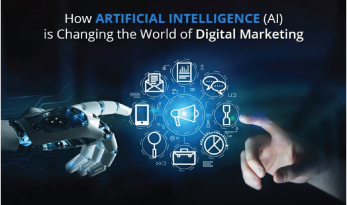Generative AI is no longer just a buzzword; it has become a pivotal technology shaping the future of businesses across industries. For leaders, understanding and leveraging its potential is key to staying competitive. This guide, “Understanding Generative AI for Business Leaders,” simplifies the complex world of AI, offering a beginner-friendly introduction along with practical strategies for effective and ethical integration.
Whether you are entirely new to AI or looking to enhance your enterprise strategy, this post will walk you through the essentials of generative AI, its applications, and the actionable steps to implement it responsibly in your organization.
What Is Generative AI?
Generative AI refers to a subset of artificial intelligence that creates new content, such as text, images, audio, or code, by learning patterns from existing data. Popularized by tools like ChatGPT, DALL-E, and Stable Diffusion, generative AI works by predicting what comes next in a sequence or generating entirely new outputs based on prompts.
Key Characteristics of Generative AI
- Creative Capability: Can produce unique content such as marketing copy, designs, or product prototypes.
- Adaptability: Learns from data and adapts to various industries and use cases.
- Efficiency: Streamlines workflows by automating repetitive tasks and accelerating decision-making.
Why Should Business Leaders Care?
Generative AI represents a transformative shift in how businesses operate. For leaders, the technology offers unparalleled opportunities to:
- Enhance Efficiency: Automate processes and reduce manual work.
- Boost Innovation: Generate new ideas, designs, and products.
- Drive Customer Engagement: Personalize interactions and improve user experience.
- Gain a Competitive Edge: Leverage AI to stay ahead of competitors adopting similar technologies.
Real-World Applications
Generative AI is already making waves in diverse industries:
- Retail: Personalized product recommendations and automated copywriting.
- Healthcare: Synthesizing patient data for better diagnostics and drug discovery.
- Finance: Automating report generation and fraud detection.
- Manufacturing: Optimizing designs for cost and efficiency.
Getting Started: A Beginner-Friendly Overview
As a business leader, you don’t need to become a data scientist to understand AI. Instead, focus on key concepts and their relevance to your operations.
Steps to Start:
- Understand the Basics: Learn how generative AI works and its potential for your industry.
- Identify Use Cases: Pinpoint areas in your organization where AI can provide the most value.
- Start Small: Begin with pilot projects to test AI’s effectiveness before scaling.
Common AI Tools and Platforms
- OpenAI’s GPT Models: For text generation.
- DALL-E: For image creation.
- Codex: For code generation.
- Custom Models: Tailored solutions for enterprise-specific needs.
Practical Strategies for Effective Integration
To unlock the full potential of generative AI, you need a clear plan that aligns with your business goals. Here’s how to do it:
1. Set Clear Objectives
Define what you want to achieve with AI. Objectives could include cost savings, improved customer experiences, or accelerated product development.
2. Invest in Training
Ensure your team understands AI tools and their implications. Workshops and online courses can help bridge knowledge gaps.
3. Collaborate Across Teams
Break down silos by involving departments like IT, marketing, and operations in AI projects. Collaboration ensures alignment and maximizes impact.
4. Measure ROI
Track the success of your AI initiatives using key performance indicators (KPIs) such as cost reductions, customer satisfaction, and time savings.
Ethical and Legal Considerations
As transformative as generative AI can be, it comes with its challenges. Navigating these responsibly is essential for sustainable adoption.
Ethical Concerns
- Bias in AI Outputs: Ensure diverse data sets to minimize discriminatory outcomes.
- Transparency: Clearly communicate when and how AI is used in customer interactions.
- Accountability: Assign responsibility for AI decisions to human overseers.
Legal Implications
- Data Privacy: Comply with regulations like GDPR or CCPA.
- Intellectual Property: Protect AI-generated content and avoid infringing on existing IP rights.
Cultural Impact and Change Management
Adopting generative AI isn’t just a technological shift—it’s a cultural one. Leaders must foster an environment that embraces change and innovation.
Tips for Successful Change Management
- Communicate the Vision: Help employees understand AI’s role in achieving business goals.
- Address Fears: Be transparent about how AI will impact jobs and responsibilities.
- Promote Upskilling: Offer training to help employees transition into new roles supported by AI.
AI’s Impact on Jobs and Decision-Making
One of the most debated topics surrounding AI is its effect on the workforce. While it may automate certain tasks, it also creates opportunities for new, AI-enhanced roles.
Job Impacts
- Roles AI Can Automate: Data entry, basic customer service, and repetitive design tasks.
- New Opportunities: AI strategy consultants, data analysts, and prompt engineers.
Enhanced Decision-Making
Generative AI supports leaders by providing:
- Data-Driven Insights: Analyzing large datasets for better predictions.
- Scenario Simulations: Testing different strategies before implementation.
Case Studies: Success Stories of Generative AI
1. Retail Giant Personalizing Experiences
A leading retailer used AI to create personalized email campaigns, resulting in a 30% increase in customer engagement.
2. Healthcare Innovator Accelerating Research
A biotech company leveraged AI to analyze genetic data, reducing the time needed for drug discovery by 40%.
3. Financial Institution Automating Reports
A bank implemented AI for automated compliance reports, saving hundreds of employee hours monthly.
Preparing for the Future: Becoming an AI-Empowered Leader
Generative AI is not a passing trend; it’s a foundational technology shaping the future. As a leader, your ability to harness it effectively will determine your organization’s success in an AI-driven world.
Actionable Steps to Take Today
- Educate Yourself: Read books, attend webinars, and follow AI thought leaders.
- Build Partnerships: Collaborate with AI vendors and consultants.
- Foster Innovation: Encourage teams to experiment with AI and share insights.
The Role of Continuous Learning
AI is evolving rapidly. Staying informed about the latest advancements and best practices will ensure your strategies remain effective and relevant.
Conclusion
Embracing generative AI is not just about adopting a new tool—it’s about transforming how your business operates. With the insights and strategies in “Understanding Generative AI for Business Leaders,” you are equipped to navigate this exciting journey responsibly and effectively.
Leverage AI to enhance efficiency, drive innovation, and secure your competitive edge. By integrating generative AI thoughtfully and ethically, you can position your enterprise for sustained success in an ever-evolving landscape. Are you ready to gain your unfair AI advantage and lead your organization into the future with confidence?


